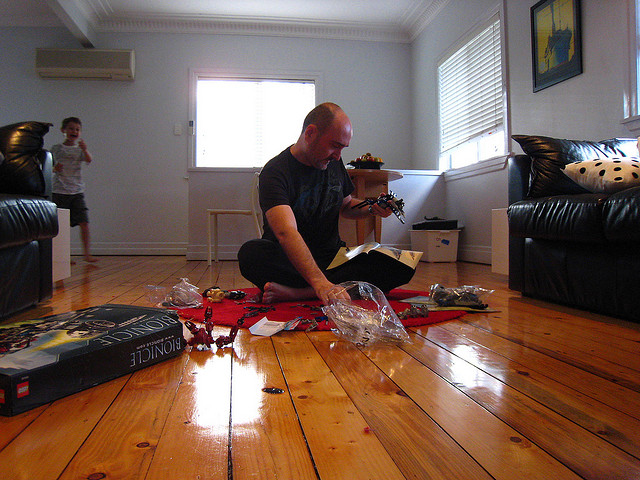Unlock the Magic in Your Story Now
Get the Free 20 questions to Ask Before Launching Your Idea workbook when you sign up for occasional updates.
Get the Free 20 questions to Ask Before Launching Your Idea workbook when you sign up for occasional updates.
The Limitations Of Knowing ‘How To’
filed in Storytelling, Strategy
 For years we’ve been rewarded for knowing the right answer. All of those gummed gold stars licked and stuck in copybooks next to neatly spaced handwriting, served their purpose.
For years we’ve been rewarded for knowing the right answer. All of those gummed gold stars licked and stuck in copybooks next to neatly spaced handwriting, served their purpose.
We can’t help wanting to know the answer.
Knowing ‘how to’ is barely an advantage to the twenty first century business owner or entrepreneur, because there is no one right answer. There is no one way to get to where you want to go—and that’s a great thing! If there was a ‘how to’ guide then everyone would have the formula and nothing we created would be unique.
Nobody told Jobs and Wozniak how to build a computer company, let alone how to make it one of the most loved brands in the world, and Howard Schultz didn’t get the Starbucks magic from a manual.
Nobody can tell you what to stand for, or how your values, wants and needs, should intersect with those of your customers and then manifest as a business, an idea or experience. Figuring out the destination is hard—but recognising it, is more valuable than knowing exactly how you’re going to get there. Until you do the hard work of understanding the ‘why’ and the ‘who for’ every tactical ‘how to’ has the potential to take you down the wrong track.
The most useful answers are the ones we take time to figure out for ourselves—not the ones that everyone can find in a handbook.
It turns out that it’s more powerful to have your own map than it is to have someone else’s directions. Once you have that map, you’ll always have a way to get from where you are to where you want to go.
Image by Caroline Jung.
Share this article
What If You Had One Line To Tell The Truth About Your Product?
filed in Marketing, Storytelling
 Imagine you have a giant billboard to tell your customers the truth about your product or service.
Imagine you have a giant billboard to tell your customers the truth about your product or service.
You’ve got just one line to do it in.
What would your truth look and sound like?
Is the truth in that single sentence what you want it to be?
If not, what do you need to do in order to rewrite it?
[It probably doesn’t involve buying a billboard.]
Share this article
Great Content Marketing Doesn’t Feel Like Marketing.

“You have more chance of summiting
Mount Everest than getting someone
to click on a banner ad.”
—Jonathan Perelman
VP at Buzzfeed
Getting the word out about your products and services can feel a bit like an Everest expedition.
You and I know that traditional advertising doesn’t work anymore. We’ve known from as far back as 2005 that the return on investment from advertising could be as little as 4%. Then along came a new marketing ‘secret sauce’, a way to attract customers and gain their loyalty—all we had to do was create content.
It’s tempting to think that we can use content in the way that we once used traditional advertising to attract the most people. The best content though, goes beyond simply being advertorial and appealing to everyone. Why do you return to your favourite blogs? What makes you share the content you choose to share?
The Secrets of great content marketing
1. Great content changes how people feel by being either useful, entertaining or inspiring.
Think about how you want your readers to feel as they read the last line of your article.
What do you want them to do next? That doesn’t mean getting them to click on a ‘BUY NOW’ link every time.
2. Your products and services help clients and customers to be better versions of themselves every day, your content should be designed to do that too.
Building trust and connection to you and your brand over time, rather than promotion, is the point. Great content doesn’t feel like marketing—it feels like a gift.
3. Just as your marketing isn’t something that’s separate from the work that you do, content marketing should be an extension of it too.
Authentically bake it into your business, don’t just slap it on as an afterthought to fill white space and create noise. Use content to help people to understand more about who you are and what your business stands for.
4. Don’t see your content as a big old sales funnel.
Treat it more like a flame, a campfire that people want to come back to. Intention is everything. People can sense yours, they know when you’re in it for the right reasons.
5. Practice patience.
The reason we got into this fix was by trying to take the shortcut to mattering to our customers. An advert that could blast hundreds of thousands of people felt like a bargain. It turns out it was a Trojan horse that destroyed our relationships with our customers. The people, brands and businesses that have the traction you’re craving have been creating content and providing value to their audiences for years. There’s nothing to stop you doing that too.
Plant your flag. Bring people with you.
Image by Brigitte Djajasasmita.
Share this article
How To Sell A Guitar…..Or Anything
 The number one reason a salesperson fails to close a sale is that she can’t effectively communicate the value of the product. Of course it makes sense that if you can’t help your customers to understand why they should care, then you’re not likely to be able to convince them to buy.
The number one reason a salesperson fails to close a sale is that she can’t effectively communicate the value of the product. Of course it makes sense that if you can’t help your customers to understand why they should care, then you’re not likely to be able to convince them to buy.
The luthier takes care to choose the perfect piece of wood. She obsesses about the distance between frets and the quality of the strings she uses. But she often forgets to spend time wondering how to tell the customer why any of that should matter to him.
A winning sales strategy doesn’t just involve working out how to sell more of what you make.
A better plan is to understand what people really value and then to give them exactly that.
Don’t sell the guitar. Sell the music.
Image by Fr1zz.
Share this article
5 Reasons Microsoft Failed To Compete In A Post iPhone World
 Soon after Apple launched the iPhone in 2007, Microsoft’s then CEO Steve Balmer gave this short video interview. In two minutes he shed light on Microsoft’s business strategy which gives us some clues as to why Apple would dominate over the next seven years.
Soon after Apple launched the iPhone in 2007, Microsoft’s then CEO Steve Balmer gave this short video interview. In two minutes he shed light on Microsoft’s business strategy which gives us some clues as to why Apple would dominate over the next seven years.
5 Strategic Mistakes Microsoft Made Post iPhone
1. Competing on price.
Steve Balmer’s opening shot signalled that Microsoft were competing on price and not thinking of other ways to add value. Just because you’re cheaper doesn’t mean you’re going appeal to more of the right people.
2. Failing to see the future and misjudging the target market for smart phones.
The leadership team at Microsoft didn’t seem to understand that one day soon, everyone—not just ‘business customers’ would want to access email and the Internet from their phone.
3. Leading with the product’s features and benefits.
Balmer talks exclusively about what Microsoft’s phones will do.
Apple always, always, always, focuses on what their products will enable people to do.
The keyboard which Balmer describes as an advantage was one of the things Steve Jobs highlighted as a disadvantage of traditional smartphones.
4. Focusing on market share before heart share.
Microsoft were ‘selling millions and millions and millions of phones a year’, Apple was selling zero. Of course we all know how rapidly that changed. Within 8 months the iPhone captured 28% of the market, because their strategy has always been to gain share of heart first.
5. Having a reactive business strategy.
Creating products and innovations from a place of fear, (you can see it in his eyes) and focusing more on beating the competition than on what would make their customers’ lives better.
How could you avoid making similar mistakes in your business?
Image by Steve Rhodes.
Share this article
What Don’t You Do?
filed in Marketing, Storytelling, Strategy
 You are challenged at least ten times every day to explain to people what you do and why you do it. This happens on your about page, at networking events and even as you sit next to someone ten thousand feet up on a transatlantic flight.
You are challenged at least ten times every day to explain to people what you do and why you do it. This happens on your about page, at networking events and even as you sit next to someone ten thousand feet up on a transatlantic flight.
A great place to start is by unapologetically telling people what you don’t do.
“We’re not cheap….”
“You won’t find that here….”
“Our best work takes time….”
One of the best examples I’ve seen of this comes from The Mill Gym here is Perth which only admits a hundred members.
“The Mill is a basic facility with all the tools we need. It is purposely designed this way for a number of reasons. One of those reasons is to sort out the pretenders from the realists. There is no time to look at yourself in the mirror, because we have no mirrors. There is no time to stop and watch TV, because we have no TVs. Nor will you find any other distractions here.”
Being really clear about what you don’t do enables you to tell potential customers what you excel at and why. But most important of all, it helps you to attract the right customers to your business and to softly close the door on people who are not a great fit for you.
Now you have more time and space to really connect with the people you want to serve.
The same rule applies whether you’re training a tiny group of hardcore athletes or building a
global yoga community.
So tell me, what don’t you do?
Image by Wally Gobetz.
Share this article
10 Ways To Stand In Your Customer’s Shoes
 When LEGO was developing a castle play set they brought fans of all ages together to get feedback.
When LEGO was developing a castle play set they brought fans of all ages together to get feedback.
The adults loved it.
“But where’s the dragon?” the children asked.
The adults explained that there were no dragons in Medieval times.
“Where’s the fun in that?” the kids replied.
So, the dragon was born.
What we think our customers want isn’t always accurate and what they say they want isn’t always the whole truth. This is why you can’t rely on hunches or even on focus groups alone. You need to find ways to empathise with your customers and to truly understand the problem you are solving for them.
10 ways to stand in your customer’s shoes
1. Spend time where your customers are, both online and offline.
2. Watch what they do.
3. Listen to what they say.
4. Look for patterns in their day to day.
5. Think about their problems, the tiniest gap in their desires and how you might fill and fulfil those.
6. Consider how they actually feel in the situation where you want to create difference for them.
7. Work out how they want to feel and deliver on that.
8. Identify their wants, both physical and emotional.
9. Question how you can get them from where they are to where they want to be.
10.Think about the change that takes place in their lives because your product or service exists.
Now go tell them that story.
Image by Andrew Scott.
 Picture the scene. A group of five girlfriends are out celebrating a birthday together. The evening is drawing to a close, dinner plates have been cleared and the last bottle of red has been emptied.
Picture the scene. A group of five girlfriends are out celebrating a birthday together. The evening is drawing to a close, dinner plates have been cleared and the last bottle of red has been emptied. When I was a little girl buying new shoes was always an event. We went to a local shoe shop, the one that advertised the credentials of their ‘specially trained fitters’ in the window. We patiently waited our turn for the magic that was about to happen. This usually involved a matronly woman and what was essentially a metal ruler in the crude shape of a shoe. The green plastic strap that she threaded around your instep to measure the width of your foot was important of course. This was science and not art, after all.
When I was a little girl buying new shoes was always an event. We went to a local shoe shop, the one that advertised the credentials of their ‘specially trained fitters’ in the window. We patiently waited our turn for the magic that was about to happen. This usually involved a matronly woman and what was essentially a metal ruler in the crude shape of a shoe. The green plastic strap that she threaded around your instep to measure the width of your foot was important of course. This was science and not art, after all.  ….is your obsession with them.
….is your obsession with them.